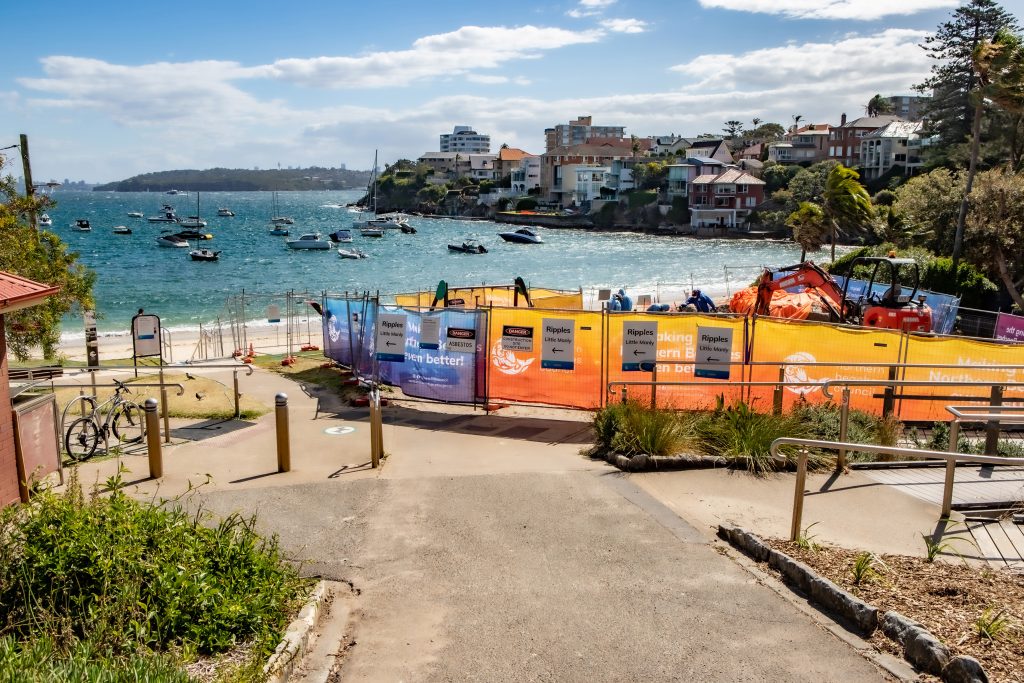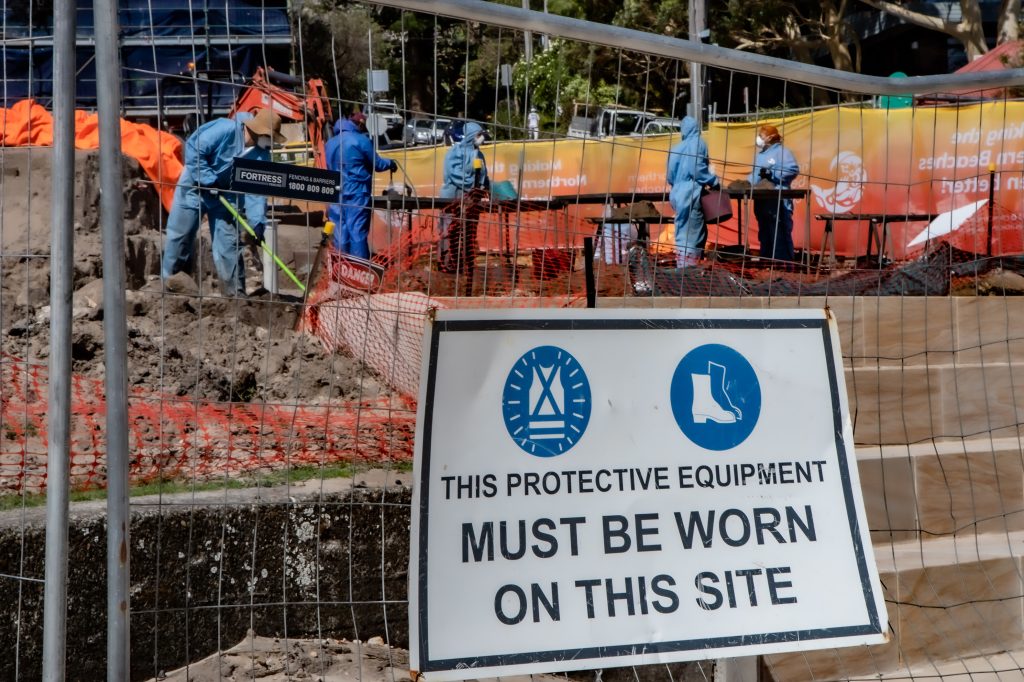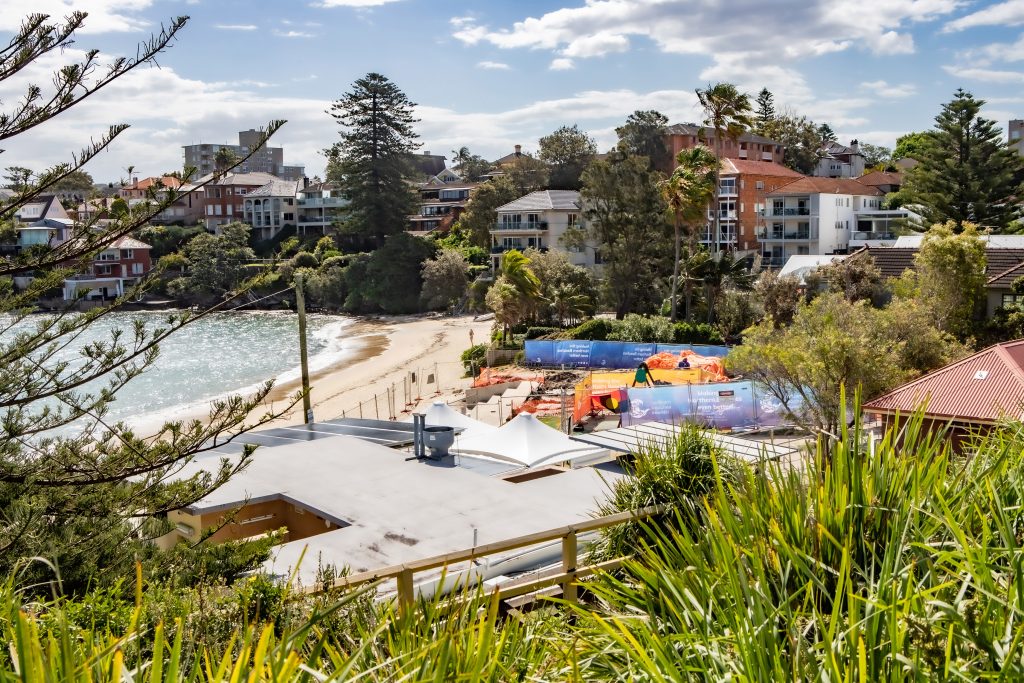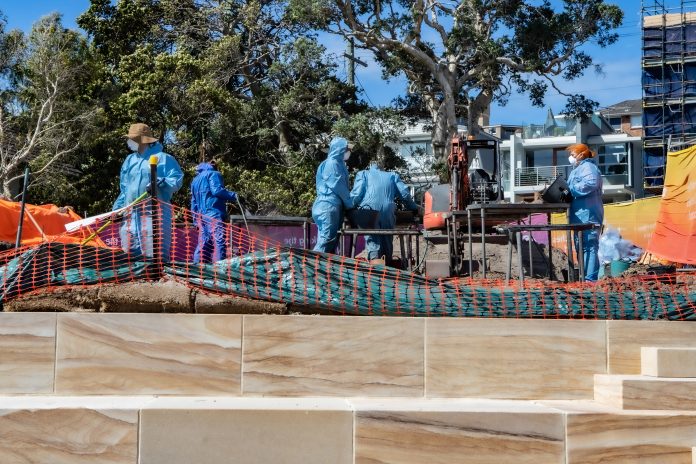Little Manly Beach upgrades, set back several months due to the unearthing of human bones during excavation work, are experiencing further delays due to the discovery of asbestos in the soil.
A spokesperson from Northern Beaches Council told Manly Observer, “Council has engaged specialist environmental contactors and an occupational hygienist to manage the asbestos removal process. Wet sieving is continuing to find asbestos fragments. Once the stockpile has been sieved, all sieved material and asbestos fragments will be removed and disposed offsite to a licenced facility.”
The spokesperson added, “It is highly unlikely Council will be able to identify the source of the asbestos as it is likely as a result of historical activities dating back many years.”
“The reserve will reopen once the stockpile sieving is complete and a clearance has been obtained from the Occupational Hygienist. It is anticipated that this will be in early 2023.”

Bones unearthed
In mid-July 2022, excavation work on the four-stepped sandstone sea wall, built to prevent erosion of the shoreline during tidal surges, was halted after bones were uncovered – later found to be from a sheep. However, the following week, on 25 July, human bones were discovered during the digging of a trench and NSW Police enacted a crime scene.
As Manly Observer reported the following day, the bones were then analysed by an archaeologist who determined that they were not of this era, and were therefore likely to be Indigenous in origin.
Because important protocols and cultural sensitivities must be observed when Aboriginal and Torres Strait Islander remains are found, all construction work was suspended.
A second Indigenous grave was uncovered on 3 August.
Northern Beaches Council issued a statement: “Work has ceased at the construction site, and it is now under Heritage NSW jurisdiction with the Aboriginal Heritage Office (AHO) and Metropolitan Local Aboriginal Land Council operating under their authorisation.”
In October 2022, the AHO confirmed that the bones were indeed Indigenous: “Aboriginal ancestral remains were found at two locations during earthworks at Little Manly Reserve, Manly, on Monday, 25th July (Burial 1) and Wednesday, 3rd August 2022 (Burial 2)…” as reported in the Manly Observer.

Asbestos uncovered
As part of the process of observing important protocols for the uncovering of Indigenous remains, professionals were employed to inspect the soil already dug up at the construction site. This was when the asbestos was exposed.
Asbestos consists of six naturally-occurring, heat-resistant, fibrous mineral ores: chrysotile, amosite, crocidolite, tremolite-asbestos, actinolite-asbestos, and anthophyllite-asbestos.
Asbestos is a highly carcinogenic compound that causes a variety of respiratory conditions and cancers, including mesothelioma and the progressive lung disease asbestosis.
Once commonly used as insulation in building walls and ceilings, as well as electrical and vehicle parts, the asbestos at Little Manly is the bonded version, not the crumbly sort that flakes easily.
The Mesothelioma Centre warn “Asbestos exposure is the primary cause of mesothelioma. This cancer forms in the lining of the lungs or abdomen. Other types of cancer caused by asbestos include lung, ovarian and laryngeal cancer. Exposure may cause scarring of the lungs or asbestosis.”

Are there any clues as to how and when the asbestos was buried beneath what became a children’s play area?
“The asbestos was discovered in the material excavated to build the new seawall,” the Council spokesperson explained. “The land was previously in private ownership. The source of the asbestos is unknown. It is likely that the asbestos came from historical activities or from an old structure on the site that was demolished before strict protocols were developed for asbestos removal.
“Council is working in close cooperation and consultation with Metropolitan Local Aboriginal Land Council (MLALC), Heritage NSW, archaeological consultants, environmental consultants and SafeWork NSW. The works are culturally sensitive.”
Is the sea wall close to completion and likely to be unveiled when the asbestos removal crew have departed?
“The sea wall is complete but is currently closed as a precaution while the asbestos is removed.”
How much longer will it take to rebuild the children’s play area, or will new exploratory digs need to be undertaken to ensure there is no asbestos or other noxious substances still in the ground?
“The reserve will reopen once the stockpile sieving is complete and a clearance has been obtained from the Occupational Hygienist. It is anticipated that this will be in early 2023.”




